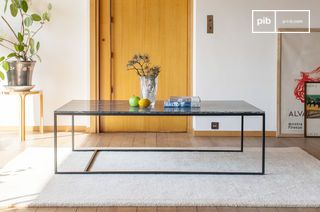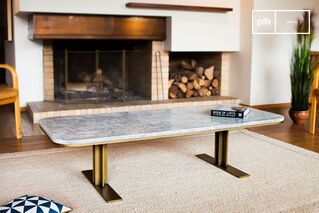Stone coffee tables
Stone coffee tables bring a dense, stable material to the center of the living room. Each stone coffee table is based on a balance between weight, texture and usable surface. The material captures light diffusely, depending on its polished, rough or honed finish. This mineral presence contrasts with light seats or structured carpets. The format is often compact, designed for fixed installation. Depending on the type of stone - marble, travertine, granite or composite - the table becomes a lasting visual landmark, with no marked chromatic variation over time. read more >
Filters
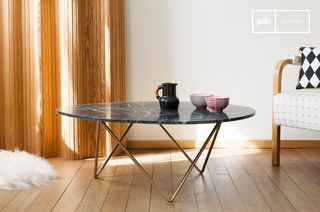
Green marble coffee tableTrivisan
€595 €535-10%
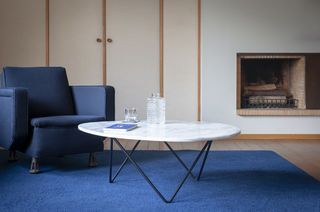
White marble coffee tableTrivisan
€595 €535-10%
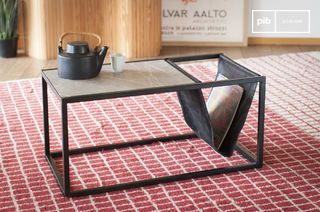
Stone magazine holder coffee tableIbiza
€365 €330-10%
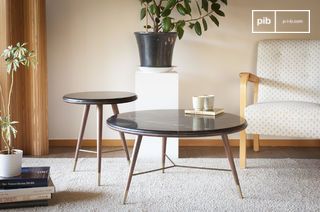
Black marble coffee tableSivart
€765 €690-10%
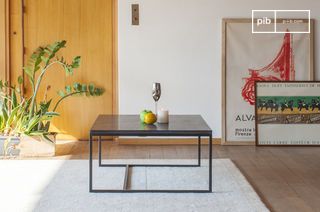
Black marble coffee tableAvedore
€495 €445-10%
10 festive days
10% off our tables and consoles
Welcome your guests in style · Limited stock
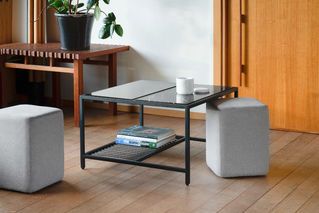
Marble coffee table with poufsNoora
€560 €505-10%
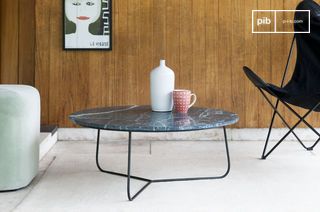
Green marble coffee tableVertü
€595 €535-10%
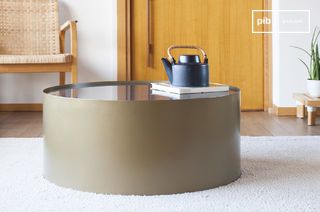
Round marble coffee tableDickinson
€995 €895-10%
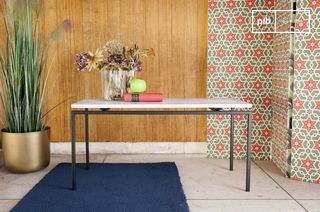
White marble coffee tableVarmalio
€365 €330-10%

Why integrate a stone coffee table into a living room?
A stone coffee table helps to structure a space in a legible, long-lasting way. The material, whether natural or reconstituted, introduces an immediate visual density. This type of table is part of a logic of ground anchoring: it doesn't seek to lighten space, but to stabilize a dense composition. Stone does not warp or fade, and its gradual wear and tear maintains a homogeneous texture, unlike varnished or painted surfaces.
Its use is suited to rooms where the center of the living room is defined and not subject to frequent movement. The structure's high weight limits mobility, but guarantees perfect stability, even on uneven floors. A stone coffee table creates a contrast with soft materials (fabric, light wood, natural fibers) in clean, clean-lined configurations. It also blends into mineral or monochrome ensembles to reinforce a unity of ambience.
Available materials and associated visual effects
The most commonly used stones include marble, travertine, granite and limestone. Each has a different structure and reaction to light. Marble offers a veined, sometimes glossy surface, which picks up reflections depending on the color and intensity of the lighting. Travertine, more matte and porous, offers a stable hue, with visible asperities that change perception with distance. Granite is dense, often granular, and particularly resistant to impact or hot objects. Limestone, which is softer, requires more care, but slowly develops a patina with use.
Each stone coffee table can be polished, honed or left rough. A polished finish accentuates contrasts and reflects light, which may suit dark or compact interiors. A matte finish absorbs ambient light and fits in better with a calm or low-contrast environment. The choice depends on the visual role you wish to assign to the table: strong punctuation or discreet continuity.
Edges can be straight, chamfered or rounded. Edge treatment influences tactile and visual feel, especially in compact or frequently-used formats. Some models feature a monolithic top, others a dissociated structure (base + top). The distinction between these two approaches depends on the balance sought between mass effect and legibility of lines.
Implantation, use and maintenance
A stone coffee table is installed on a stable, preferably non-fragile support: tiled floor, concrete, solid wood or dense carpet. The weight of the piece of furniture must be taken into account at the time of purchase and delivery. It is not designed to be moved regularly. Its position must be defined in advance, respecting a minimum clearance of 30 to 40 cm between the top and the seats.
The top accommodates everyday objects: books, glasses, decorative elements. As some stones are more sensitive to acidity or heat, the use of coasters and protectors is recommended, particularly for marble and limestone. Clean with a damp cloth and a neutral, non-abrasive product. Porous finishes can be waterproofed from time to time, depending on the nature of the stone and the frequency of use.
This type of table can work alone or in a duo with a smaller or lower version as a complement. Multiple compositions allow the useful surface to be modulated without introducing artificial lightness. The aim remains to maintain the formal coherence of the whole, even in the presence of several volumes.
Choosing a stone coffee table means setting a stable point in the room. It is intended for spaces designed for the long term, where mass and material take precedence over mobility or modularity.
The choice of a stone coffee table means establishing a stable point in the room
